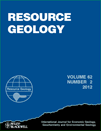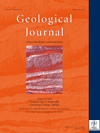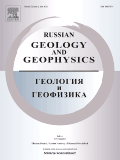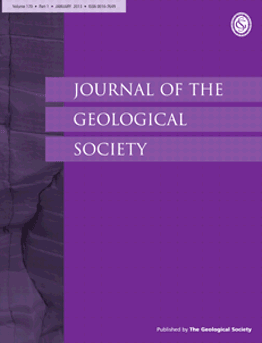
RESOURCE GEOLOGY
Scope & Guideline
Elevating Geochemistry for Tomorrow's Challenges
Introduction
Aims and Scopes
- Ore Formation and Mineralization Processes:
The journal focuses on the processes of ore formation, including the geochemical and mineralogical characteristics of deposits, providing insights into the mechanisms of mineralization. - Geochemical Analysis and Geochronology:
Research often employs geochemical methods and geochronological techniques to understand the origins and evolution of mineral deposits, contributing to the broader field of economic geology. - Environmental Geology and Risk Assessment:
There is a consistent focus on the environmental implications of mining and mineral extraction, including studies on contamination and risk assessment of mining areas. - Fluid Inclusion Studies:
The journal frequently publishes studies on fluid inclusions, which are critical for understanding the conditions and processes involved in mineralization. - Regional Geology and Metallogenic Studies:
The journal covers regional geological surveys and metallogenic studies that highlight the geological diversity and mineral potential of various regions worldwide.
Trending and Emerging
- Hydrothermal Alteration and Mineralization:
There is an increasing focus on the study of hydrothermal systems, particularly in relation to their alteration processes and mineralization patterns, which are critical for understanding ore genesis. - Trace Element and Isotope Geochemistry:
Research utilizing trace element analysis and isotope geochemistry has gained prominence, enhancing the understanding of the origins and evolution of mineral deposits. - Sustainable Mining Practices and Environmental Impact:
Emerging themes in environmental geology, particularly concerning sustainable mining practices and the assessment of environmental impacts related to mineral extraction, reflect a growing concern for ecological sustainability. - Integration of Multi-disciplinary Approaches:
The trend towards integrating various scientific disciplines, such as geology, geochemistry, and geophysics, is increasingly evident, facilitating a more comprehensive understanding of mineral resources. - Impact of Climate Change on Mineral Resources:
Studies examining the influence of climate change on mineral resource availability and extraction processes are becoming more common, indicating a shift towards addressing global challenges.
Declining or Waning
- Paleoenvironmental Studies:
Research related to paleoenvironmental reconstructions and their direct implications for mineral deposits has been observed less frequently, suggesting a shift towards more contemporary geological processes. - Traditional Geophysical Methods:
There seems to be a waning interest in traditional geophysical techniques for mineral exploration, as newer and more integrated approaches are gaining traction in the field. - Historical Mineralization Reviews:
While historical reviews of mineralization processes were once common, they appear to be declining as the focus shifts toward more innovative and contemporary case studies.
Similar Journals

GEOLOGICAL JOURNAL
Illuminating the path of geological research for over seven decades.GEOLOGICAL JOURNAL, an esteemed publication by WILEY, has been at the forefront of geological research since its inception in 1951. With an ISSN of 0072-1050 and E-ISSN of 1099-1034, this journal serves as a vital platform for disseminating high-quality, peer-reviewed research in the field of geology. Operating out of the United Kingdom, the journal proudly features a Scopus rank of 80 out of 321 in the Earth and Planetary Sciences category, reflecting its commitment to scholarly excellence, with a 2023 category quartile ranking of Q2. As part of its innovative approach, GEOLOGICAL JOURNAL seeks to foster interdisciplinary collaborations, advancing our understanding of earth processes, materials, and history. Although it does not offer open access options, its robust subscription model ensures that both professionals and students have access to groundbreaking insights. With a publication history that spans over seven decades, the GEOLOGICAL JOURNAL continues to be an indispensable resource for the global geological community, encouraging discoveries that shape our comprehension of the planet.

GEOLOGIA CROATICA
Connecting Researchers to the Heart of GeologyGEOLOGIA CROATICA is a distinguished open-access journal published by the Croatian Geological Survey, dedicated to advancing the field of Earth and planetary sciences. Since its inception in 1992, this peer-reviewed journal has become an essential resource for researchers, professionals, and students interested in various aspects of geology. With its robust impact factor and a prestigious place in Scopus rankings, ranking 127th out of 321 in Geology and 77th out of 159 in miscellaneous Earth and Planetary Sciences as of 2023, GEOLOGIA CROATICA maintains a strong international presence. It provides a platform for the dissemination of critical research findings, promoting collaboration and knowledge sharing among the global scientific community. By focusing on high-quality manuscripts that cover geological processes, hazards, and resources, this journal is pivotal for anyone looking to contribute to or expand their understanding of geological sciences. The journal's commitment to open access ensures that invaluable research is accessible to all, fostering a more informed and scientifically engaged society.

JOURNAL OF THE GEOLOGICAL SOCIETY OF INDIA
Connecting regional insights with global geological trends.JOURNAL OF THE GEOLOGICAL SOCIETY OF INDIA, published by Springer India, serves as a pivotal platform for researchers and practitioners in the field of geology. Established in 1979, this journal has been instrumental in advancing geological research throughout India, showcasing both regional studies and cutting-edge global research. With its Category Quartile ranking of Q3 in the geology category for 2023, and a significant Scopus rank of 171 among 321 journals in Earth and Planetary Sciences, it remains a respected source of scholarly activity. The journal is dedicated to the dissemination of original research articles, reviews, and case studies that encapsulate the dynamic scope of geological science, thus contributing to the understanding of geological phenomena. Although currently not offering open access, the journal maintains a commitment to high-quality scholarship and aims to engage a diverse readership, enhancing the knowledge and practice of geology across various disciplines.

Russian Geology and Geophysics
Catalyzing Discoveries in Geoscience ResearchRussian Geology and Geophysics is a seminal journal published by GEOSCIENCEWORLD that plays a pivotal role in the dissemination of vital research within the realms of Earth-Surface Processes, Geology, and Geophysics. With an ISSN of 1068-7971 and an E-ISSN of 1878-030X, this journal has witnessed a continuous evolution since its convergence in 2007 and is poised to thrive through 2024. While it is not an Open Access journal, it is recognized for its significant contributions to the academic community, holding a respectable Q2 ranking in Earth-Surface Processes and Q3 rankings in both Geology and Geophysics as of 2023. The journal’s impact factors align it within competitive quartiles, marking it as an essential resource for researchers and professionals seeking to stay at the forefront of geological and geophysical sciences. By publishing high-quality peer-reviewed articles, the journal fosters an environment of knowledge sharing and innovation, making it indispensable for students, practitioners, and scholars alike who are dedicated to advancing our understanding of Earth's complex systems.

LITHOLOGY AND MINERAL RESOURCES
Connecting Science and Sustainability in Mineral ResourcesLITHOLOGY AND MINERAL RESOURCES, published by PLEIADES PUBLISHING INC, is a specialized journal dedicated to advancing knowledge in the fields of economic geology, geochemistry, and petrology. With its ISSN 0024-4902 and E-ISSN 1608-3229, this journal has established itself as a critical resource for scholars and practitioners alike, examining the intricate relationships between lithology and mineral deposits, and their implications for resource management. As indicated by its positioning in the Q3 quartile for both economic geology and geochemistry and petrology in 2023, the journal is recognized for its valuable contributions to the scientific community, ranking #28 out of 43 in Economic Geology and #112 out of 154 in Geochemistry and Petrology according to Scopus. The journal's publication history reveals a rich tradition of excellence, as it has been continuously contributing to the field from 1984 to 2024. While it does not offer open access options, researchers and practitioners can easily engage with its robust body of work in effective ways to support their own studies and applications. The importance of LITHOLOGY AND MINERAL RESOURCES lies in its commitment to publishing high-quality research that informs practices in mineral exploration and environmental stewardship, making it an essential resource for anyone invested in the future of earth sciences.

China Geology
Fostering Collaboration in Geoscience ExplorationChina Geology, published by KEAI PUBLISHING LTD, is a leading open-access journal that serves as a pivotal platform for disseminating high-quality research across a wide spectrum of Earth sciences. Since its inception in 2018, the journal has rapidly established itself with an impressive Q1 ranking in multiple critical categories, including Geology, Economic Geology, and Oceanography, among others, reflecting its significant contribution to the academic community. Positioned as a top-tier journal in the Earth Planetary Sciences domain, it ranks #22 out of 321 in Geology and exhibits an admirable impact in sub-fields such as Earth-Surface Processes and Geochemistry and Petrology. China Geology is committed to promoting rigorous scientific inquiry and facilitating the open exchange of knowledge in the geosciences, making it an essential resource for researchers, professionals, and students eager to explore innovative developments and fundamental advances in geology. The journal’s accessibility ensures that critical findings reach a broad audience, thereby enhancing collaboration and driving forward scientific discourse in the global community.

Moscow University Geology Bulletin
Shaping Understanding of Our Planet, One Article at a TimeMoscow University Geology Bulletin, published by SPRINGER INT PUBL AG, is a prominent platform for disseminating critical research in the field of Earth and Planetary Sciences. With an ISSN of 0145-8752 and an E-ISSN of 1934-8436, this journal is well-regarded for its contributions to diverse geological studies and interdisciplinary advancements that shape our understanding of the planet. The journal has established itself in the academic community, particularly noted for its ranking in the Q3 category within Earth and Planetary Sciences as of 2023. Despite its limited open-access options, the Moscow University Geology Bulletin remains an essential resource for researchers, professionals, and students through its well-curated articles and synthesis of geoscientific knowledge. With annual volumes converging from various years, including significant years like 2012 to 2024, it aims to uphold its mission of fostering scholarly dialogue and innovation in the geosciences.

JOURNAL OF THE GEOLOGICAL SOCIETY
Empowering Geoscientists with High-Impact ResearchJOURNAL OF THE GEOLOGICAL SOCIETY, published by GEOLOGICAL SOC PUBL HOUSE, is a premier academic journal dedicated to advancing the field of geology. With a rich history dating back to 1845 and continuously published until 2024, this journal caters to a diverse audience of researchers, professionals, and students involved in earth sciences. The journal is recognized for its high impact factor, situating it in the top Q1 category in the field of geology, as indicated by its impressive Scopus rank of #49 out of 321, positioning it at the 84th percentile in Earth and Planetary Sciences. This esteemed scholarly platform promotes rigorous peer-reviewed research, ensuring that novel findings contribute to the global geological discourse. Although it operates under a subscription model, the journal's archive offers valuable insights for anyone pursuing excellence in geological research. The JOURNAL OF THE GEOLOGICAL SOCIETY stands as a vital resource for disseminating scientific knowledge and fostering educational growth within the field.

MINERALOGICAL MAGAZINE
Illuminating the Path of Mineralogical DiscoveryMINERALOGICAL MAGAZINE, published by Cambridge University Press, is a distinguished journal dedicated to advancing the field of mineralogy and its related disciplines, including geochemistry and petrology. With its ISSN 0026-461X and E-ISSN 1471-8022, this quarterly journal has successfully carved a niche since its inception, contributing critical research and insights from 1969, with ongoing publications up to 2024. Holding a commendable Q2 ranking in the field, it currently occupies the 61st position among 154 journals in its category, reflecting its robust influence as measured by Scopus rankings at the 60th percentile. Scholars and researchers seeking to publish impactful findings in earth sciences will find MINERALOGICAL MAGAZINE an essential platform that not only supports rigorous research but also fosters global discourse within the mineralogical community. Its accessibility ensures that valuable insights reach a wide audience, solidifying its position as a beacon for professionals and students alike in understanding the complexities of mineral compositions and their broader implications on earth science.

Acta Geochimica
Fostering Collaboration in the Heart of Earth Sciences.Acta Geochimica is a prominent academic journal published by SPRINGER INT PUBL AG, focusing on the dynamic fields of Geochemistry and Petrology. Established in 2016, this peer-reviewed publication has quickly gained recognition within the scientific community, currently holding a category quartile ranking of Q3 in Geochemistry and Petrology as of 2023. With its ISSN 2096-0956 and E-ISSN 2365-7499, the journal offers a platform for researchers and professionals to disseminate and discuss significant advancements in the study of the chemical composition of the Earth and other celestial bodies. While it is not an open-access journal, Acta Geochimica plays a vital role in fostering collaboration and innovation among scientists, contributing to a deeper understanding of geochemical processes. Located in Switzerland at Gewerbestrasse 11, Cham CH-6330, Switzerland, this journal is a critical resource for students, researchers, and professionals seeking to push the boundaries of knowledge in Earth sciences.